We can get by doing the bare minimum.
Read over your notes a few times.
Highlight a few things.
We’re good to go for the test!
So when this approach no longer works in upper school, many students are confused.
It’s a massive shock to their system.
But there is a fundamental difference between upper school and your previous years of schooling. And it’s this …
Because if everything was easy, your brain wouldn’t grow. It simply wouldn’t develop in the ways it needs to be healthy and strong.
But here’s the interesting thing about your brain . . .
Your brain loves comfort and success. It rewards you when you do things that you’re good at (rather than the things you suck at).
But neurologists Doctors Dean and Ayesha Sherzai state your brain needs to be challenged daily. It needs to do things that make it feel uncomfortable (this prevents cognitive decline).
Learning challenging content is just what your brain needs. But with challenging content comes some discomfort and confusion.
Learning a new concept may require engaging in several of the following actions:
• Reading your textbook;
• Watching a video on YouTube of an expert explaining the concept;
• Going for a walk to let the ideas simmer away (i.e. diffuse mode thinking);
• Reading a simplified explanation on Ducksters;
• Explaining the concept to a friend,your dog and/or the wall;
• Asking the teacher or tutor questions to clarify; and
• Practising doing some past exams and testing yourself with some flash cards (i.e. retrieval practice).
You have a breakthrough moment. Suddenly, after all that mental wrestling, you reach a critical threshold. Finally, things start to make sense.
As you go about your studies, you’ll enter what author James Clear calls “the valley of disappointment”.
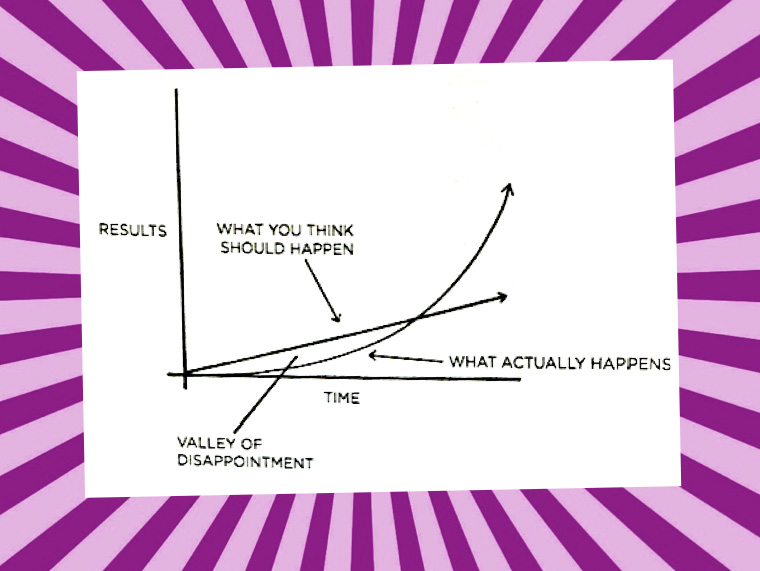
James Clear states:
“We often expect progress to be linear. At the very least, we hope it will come quickly. In reality, the results of our efforts are often delayed. It is not until months or years later that we realize the true value of the previous work we have done. This can result in a “valley of disappointment” where people feel discouraged after putting in weeks or months of hard work without experiencing any results. However, this work was not wasted. It was simply being stored. It is not until much later that the full value of previous efforts is revealed.”
When you’re struggling with a new concept, don’t see this as a waste of time. You’re just passing through the valley of disappointment. If you keep at it (one step at a time), you’ll arrive at a breakthrough.
Well, yes. It is. But that’s how the process goes. It takes time. It takes effort.
You just need to take things one step at a time. Set the bar at a reasonable level. Focus on the process (don’t worry about your results). Because a breakthrough moment is coming.
Share This:
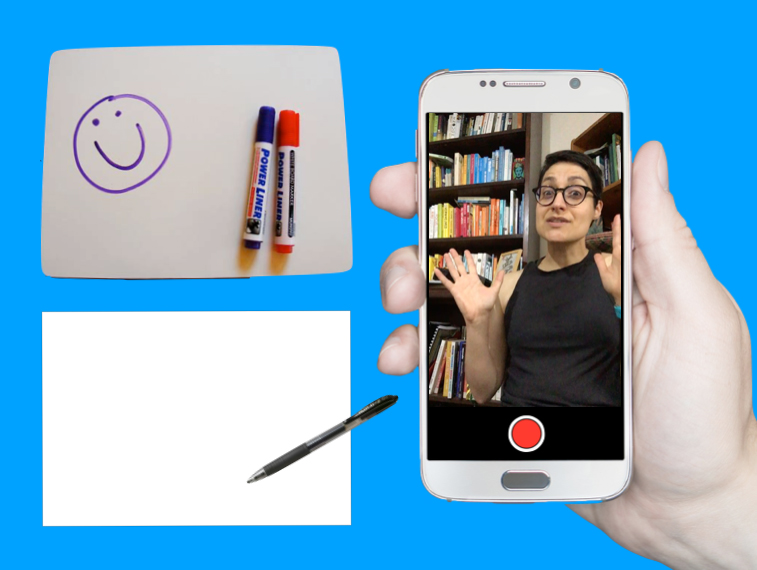
Research shows active recall (aka retrieval practice) is a highly effective strategy for remembering information. This strategy will take your studies and your grades to the next level.
Active recall involves bringing information to mind without looking at your books and notes.
I have spent the last 30 days experimenting with this excellent learning strategy. In this blog, I’ll share what I did and how I kept the process interesting for my brain.
I no longer need to study for tests and exams.
So, why did I spend 30 days using active recall strategies?
In my line of work, I need to constantly come up with new and original content to present to students. I also need to memorise this content. Why?
Because if I was to read from a sheet of notes or text heavy slides that would be really boring for students. I want to connect with students and to do this, I have to be able to deliver the content off the top of my head with speed and ease.
This is where active recall enters the picture.
Active recall helps to speed up the learning process. It allows you to learn more in less time.
Below I share some of the ways I use active recall to learn new presentation content. Keep in mind, you can use all of these strategies to prepare for an upcoming test or exam.
Whiteboards are wonderful learning tools. Here’s how I use a whiteboard to do active recall . . .
I push my speech notes to the side, so I can’t look at them. Then I grab a marker and say to myself, “What can you remember? Go!”.
I write out everything I can remember on the whiteboard. Once I’ve exhausted my memory, I pick up my notes and check to see how I went (using a red marker to make corrections).
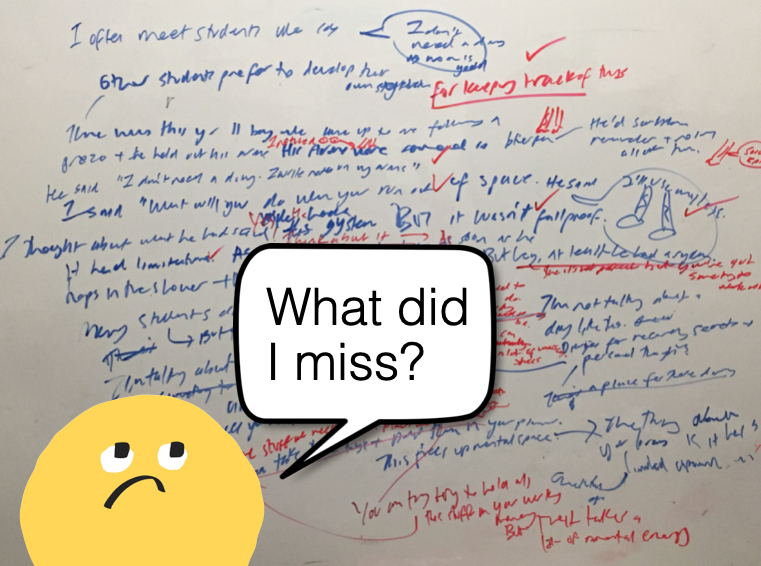
No whiteboard? No problem!
I pick up a pen and sheet of paper and start scribbling out whatever I can remember on the topic. When I get stuck, I pause and take a few deep breaths as I try to scan my brain for the information.
I regularly remind myself that it is okay to not remember the content. “This is how the process goes!”, I say to myself. There is no point beating myself up. That only leads to feelings of misery and not wanting to do active recall practice.
After having a shot at it, I take out my notes, pick up a red pen, and begin the process of checking to see how I went.
Sick of writing? I get it.
Try drawing out the information instead. Alternatively, you can use a combination of words and pictures, which is what I often do.
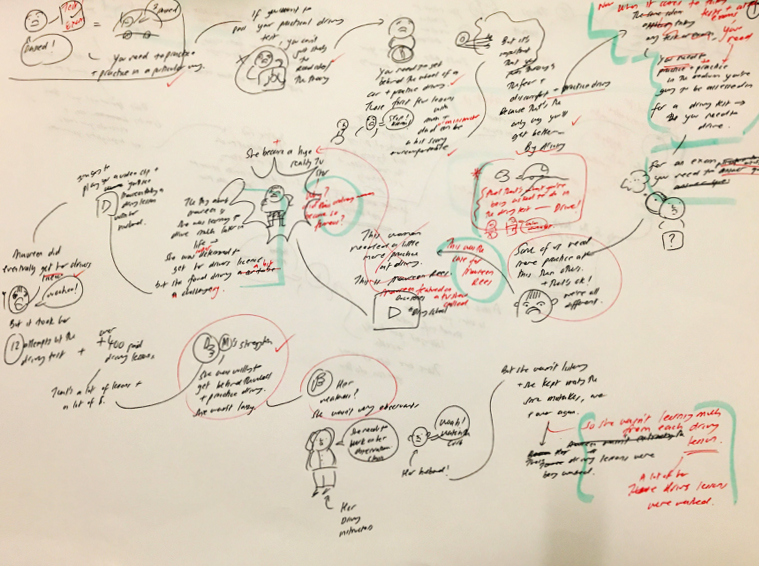
Grab a blank piece of paper (A3 size is best) and create a mind map of everything you can remember on a topic (no peeking at your notes). Then check your notes or the original mind map to see what you remembered correctly and incorrectly.
Writing and drawing out information can take time. If you want to speed up the process, you can talk to yourself.
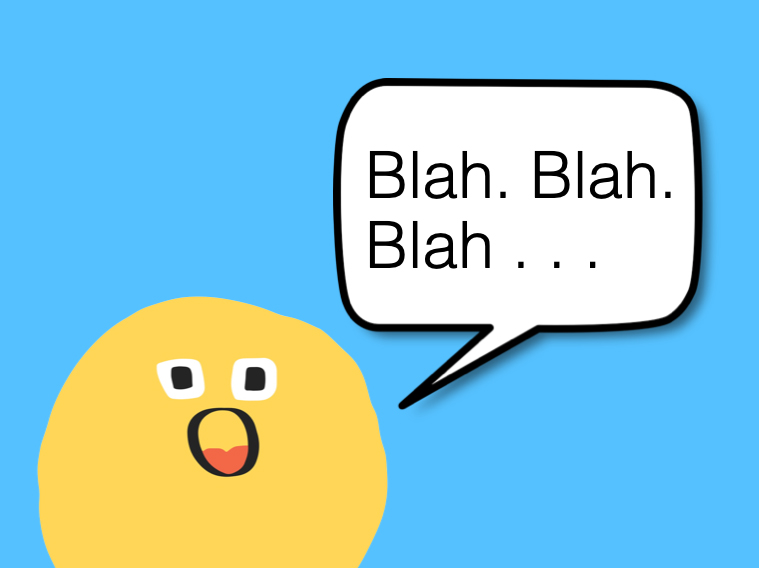
But don’t do this in your head. It’s too easy to just say “Yeah, yeah, I know this stuff!”. You need to speak it out loud as this forces you to have a complete thought. Then, check your notes to see how you went.
The only downside with this approach is you don’t have a tangible record of what you recalled, which brings me to the next strategy . . .
I make videos of myself presenting the content (without referring to my notes). Although I use special software and tools to make my videos, you don’t need any fancy equipment. Your phone will do the job. Here’s what you can do . . .
Set your phone up so the camera is facing you. Now hit the record button and tell the camera what you’re going to do active recall on. Have a shot at explaining the idea. Then stop recording and hit the play button.

Watching yourself struggle to remember information is often hard viewing. But this is where it’s super important to double down on telling yourself kind thoughts (e.g., “I’m still learning this content. It’s going to be rusty and feel clunky – that’s okay!”).
You need to take a deep breath and keep watching because the video will give you valuable feedback.
For example, if you stop midsentence and you don’t know how to proceed, that tells you something: you don’t know this stuff so well! Make a note. This part of the content needs your attention.
Hand your notes over to a friend, parent, or sibling. Now get them to ask you questions on the content.
I sat with my mum and showed her a print out of my slides for a new presentation. The slides were just pictures (no text).
As I went through the slides, I explained the ideas to mum. I made notes of any sections I was rusty on. Mum also asked lots of questions, which allowed me to think more deeply about the content.
When it came crunch time (a few days before the final presentation), I printed out my presentation slides (16 per page) and used each slide as a prompt. I’d look at the slide and say, “What do I need to say here?”.

Sometimes I wrote out what I’d be saying in relation to each slide (without looking at my notes). Then I checked my original notes to make sure I hadn’t forgotten anything.
It’s really important that you don’t skip the stage of checking to see how you went, especially as you become more confident with the content.
At times, I found myself thinking “I know this stuff! I don’t need to check my notes” but then another part would say, “You better just check . . . just to be on the safe side”.
I’m glad I forced myself to check because more often than not I would discover that I had missed a crucial point.
Zines are cute little booklets you can create on any topic you like. They are fun to make, so I thought I’d try making a mini zine on the main points of some new content I had to learn.
I folded up an A4 page into a booklet and then I sketched out the main points on each panel.
I create a deck of flashcards on some key ideas (question on one side and the answer on the back) and then I test myself with them.
I read the question and before flipping the card, I write out the answer on a sheet of paper or say it out loud. Then I check to see how I went.
The beauty of flashcards is they are small and portable (they can easily fit in your pocket or bag). Whenever you have a spare minute or two, you can get a little active recall practice in.
It’s not enough to do active recall just once on the content you need to learn. For best results, you want to practice recalling the information several times over a period of time.
I didn’t follow a strict schedule for the 30 days. I had my notes for each important chunk of information I had to learn pinned to eight different clipboards.
Every morning, I’d pick up a different clipboard and I’d practice that specific content. I knew as long as I’d had a good night’s sleep in between practice sessions that the information was being strengthened in my brain.
Doing active recall is a bit like doing a high intensity workout: it can be exhausting. But you must remember, just like a high intensity exercise session is an effective way to train and get fit, active recall is an effective way to learn. Unlike less effective strategies (e.g., rereading and highlighting), you can learn a lot in a short space of time with active recall.
The key is to expect the process to be a little uncomfortable. Don’t fight the discomfort. If you trust the process and persevere, it won’t be long before you begin to see amazing results.
Just because active recall is challenging to do that doesn’t mean you can’t have fun with it.
Using a combination of different active recall strategies is one way to keep things fresh and interesting for your brain. But you may wish to try the following things to add a little boost of fun to your active recall sessions:
• Use a different type of pen
• Use a different coloured pen
• Change the type of paper or notebook you use (e.g., instead of using lined paper, use blank A3 paper)
• Incorporate movement into your active recall sessions (e.g., walk and test yourself with some flashcards)
• Change your study environment (e.g., go to the library or study outside)
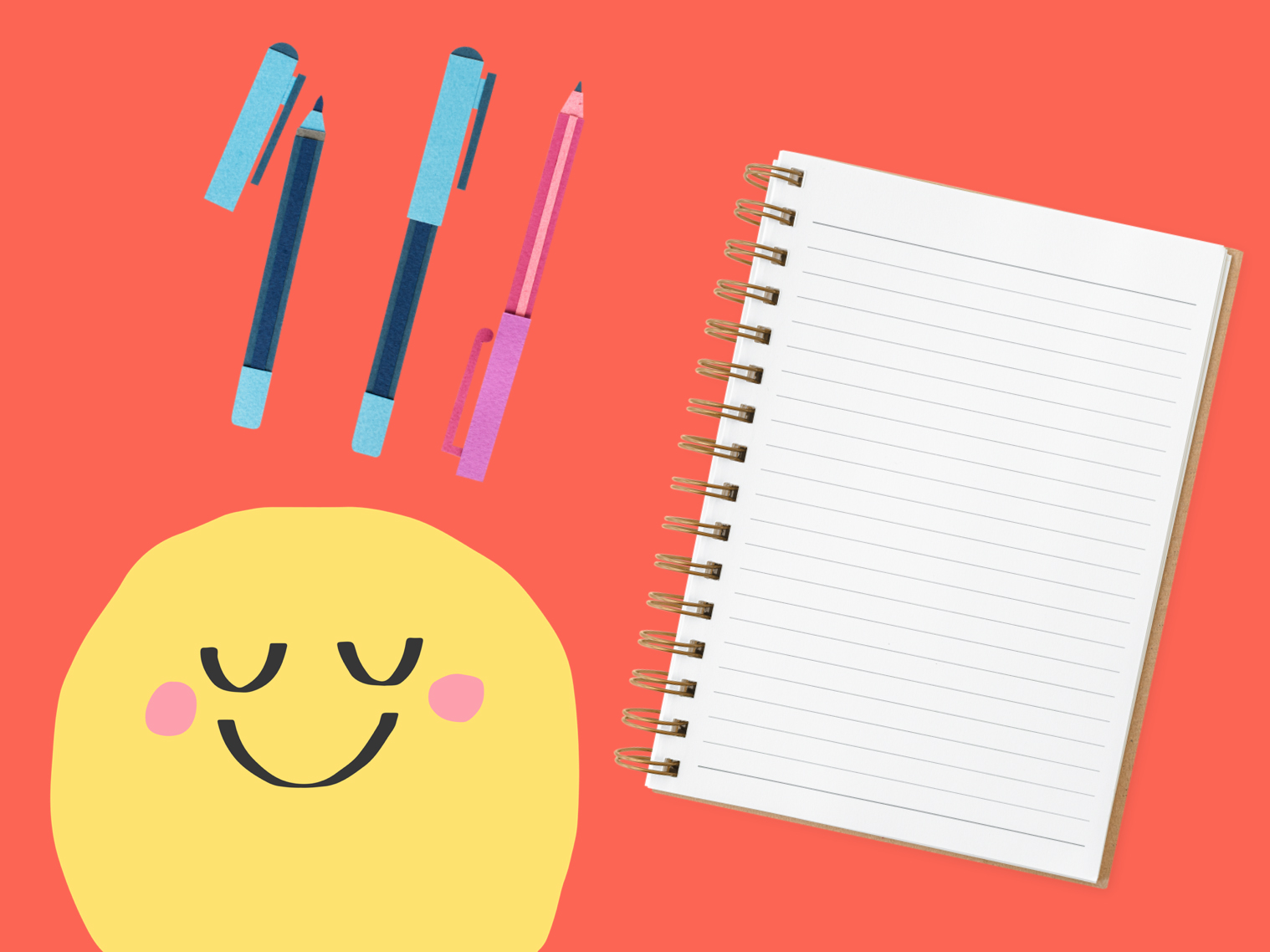
Like I said, active recall is challenging to do, especially when you first start learning new content. You can feel awkward and clumsy. For this reason, it’s easy to make excuses to get out of doing it (e.g., “I’m too tired”, “I’m not ready to do it”, and “It’s not the right time”).
This is where you need to harness the power of habits.
Find a set time in your day to do a little active recall practice. For instance, during my 30 days of active recall, I scheduled my practice sessions for first thing in the morning. I knew after I washed my face, I would sit down to practice.
Incorporating active recall into my morning routine worked really well for me. I was getting the hardest thing done first thing in the day. And once it was done, I could relax. It was done and dusted!
At a certain point, I became more confident with the content and I found I was on a roll. I felt motivated to do active recall.
This is when I started to look for spare moments in the day to squeeze in a few extra mini practice sessions.
For example, one day I found myself waiting in a car. I grabbed a paper shopping bag and started scribbling out the content onto the bag. As soon as I got home, I checked the shopping bag against my notes.

I hope you can see that there’s no one set way to do active recall. This is a highly effective strategy you can be creative with. As long as you’re testing yourself and checking to see how you went, you can’t go wrong.
And if you do make a mistake? It’s no big deal. If you check to see how you went, you won’t embed the error in your long-term memory.
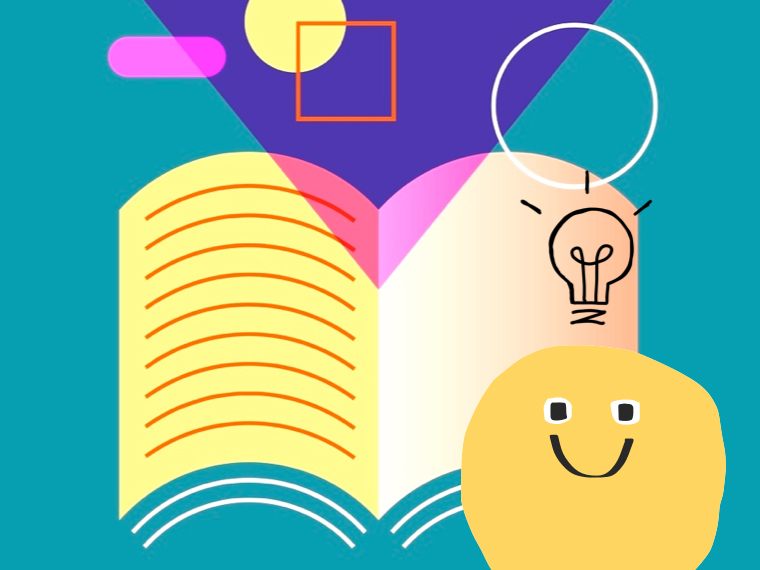
Study is such a vague term.
Many students know they should study, but they’re not exactly sure what study is and what they should be doing.
This is a problem.
If you don’t know what study is and what effective study looks like, chances are you probably won’t be able to do it.
You’ll be winging it.
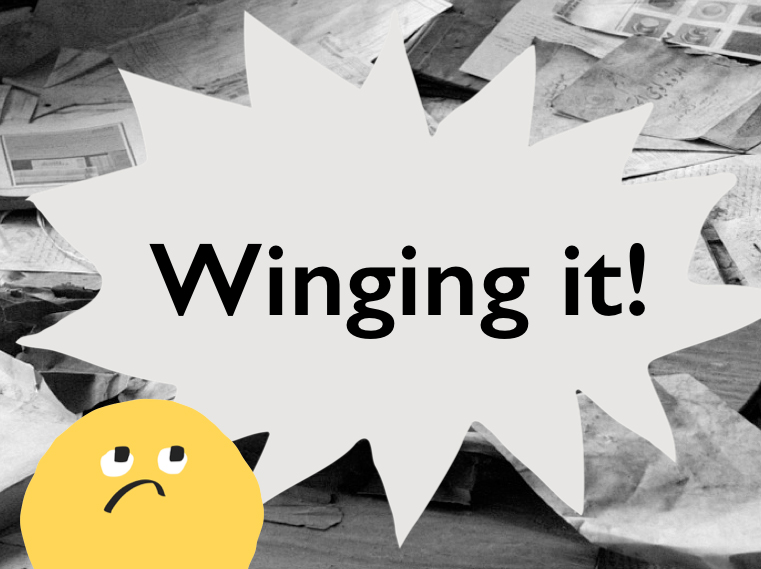
How can you develop a solid study habit?
I’m going to breakdown what study is and how you can study in the most effective way to optimise learning. I’ll also share a simple way to combat procrastination and kick-start your study sessions.
Study is where you spend time understanding ideas. It also involves cementing ideas into your memory.
Study is different from collecting information (e.g., downloading articles, buying books, and saving videos to watch later). Study involves taking that information, spending time trying to understand ideas, and making connections between different ideas.
Let’s be clear . . .
Study is different from working on homework and assignments.
Homework and assignments are relatively straightforward. The teacher tells you exactly what you need to do. If you’re not sure what to do, you can ask for clarification.
Study is not so clear cut.
Unless you have a private tutor, a friend, or teacher who spells out what you need to do in your study sessions (e.g., “Go test yourself with this flashcard deck tonight and then test yourself again in two days’ time”), no one is telling you what to study and how to do it. This is something you need to figure out for yourself.
The good news is there are simple things you can do to help you pinpoint what you need to study (more on this shortly).
You will forget most of what the teacher says in class unless you make an effort to retain it. This is why study is so important. Study is what embeds ideas into your memory.
In psychology, there’s a concept known as the Forgetting Curve.

The idea is simple: information leaks out of your brain over time. But by studying, you can slow down the rate of forgetting and even interrupt it completely.
Most of us have unrealistic expectations when it comes to learning new ideas and skills.
A lot of students expect learning to be fast and easy like in the science fiction film The Matrix.
There’s a famous scene in The Matrix where Neo gets plugged into the ‘Knowledge Upload Machine’. A floppy disk with combat skills is inserted into the machine and Neo rapidly acquires all the skills of jujutsu.

Many of us want instant results like Neo. If we can’t understand something straight away or nail the skill the first time, we give up.
What do we do instead?
We run to things that deliver instant gratification (e.g., TikTok, video games, and YouTube). These things bring us temporary relief from the negative feelings and discomfort that arise when we are faced with challenging work.
But they also take us further away from our goals.
Here’s the reality of study . . .
Study isn’t easy.
It takes work.
It takes time.
But if you can get yourself to sit down and do a little bit of study every day, you’ll see that over time all those study sessions will add up to something solid.
It’s easy to fall into the trap of thinking of study as being one giant overwhelming task. This makes the work feel scary and extracts all the fun from the process.
When we see study as being overwhelming, we feel stressed and when we feel stressed about any task, we are more likely to procrastinate.
So, let’s break the process down into more concrete simple tasks to make it seem more manageable and less threatening.

Before you sit down to study, set yourself up with the things you need to learn. Get out your pens, paper, notes, textbook, flashcards, a glass of water, post-it notes, noise blocking earmuffs/headphones, etc.
Is there anything that could distract you when you study?
Deal with distractions from the outset. Create a barrier between you and Big Tech (this way it will be hard to run to the fun stuff when things get tricky with your work).
The simplest and most powerful thing you can do is take your phone and place it away from your body in another room. Turn it off or put it on silent.
If there is any visual clutter in your space, collect it up in a box and put it in another room. Being surrounded by piles of clutter can increase your stress levels and make it hard to focus.
Setting yourself up is an important first step for several reasons:
1. It will help you get into a state of flow with your learning;
2. You’re warming your brain up and mentally preparing it to do the work; and
3. You’ll be less distracted which will allow you to learn more in less time.
Once you’ve set yourself up, this bring us to the next step . . .
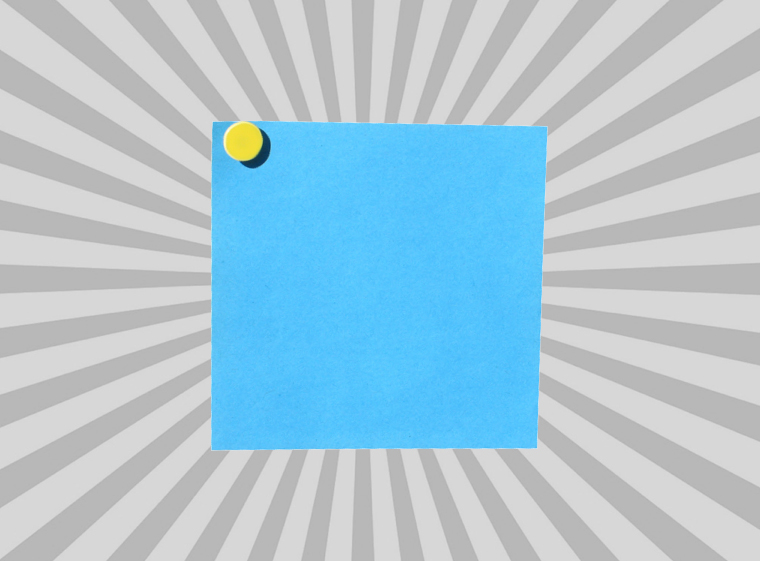
Select a subject and then ask yourself these simple questions:
1. What didn’t I understand in class today?
2. What topics were confusing?
3. Where are the gaps in my knowledge?
These questions can be difficult to answer several hours after a class, especially if you didn’t take any notes in class.
This is why it’s a good idea to scribble down on a post-it note anything you don’t understand in class. This post-it will help guide your study sessions later in the day.
If you can’t answer the above questions, here are some ways you can gain clarity on what you need to study:
• Check the unit content section of your syllabus. Focus on the content you have already covered in class. If any words are unfamiliar or confusing, that’s a clue you need to study those ideas. Why? Because you’re going to be assessed on this content at some point in the future.
• Test yourself with a practice test, past exam paper, or flashcards. Stumped by a question? There you go! That’s a sign you don’t understand this particular topic so well.
When you realise you’re a bit rusty on a concept or don’t understand something, don’t feel bad. Instead, write the concept on a post-it note and tell yourself “Good job!” You’ve just pinpointed something to study. You’re one step closer to getting a better understanding of the content.
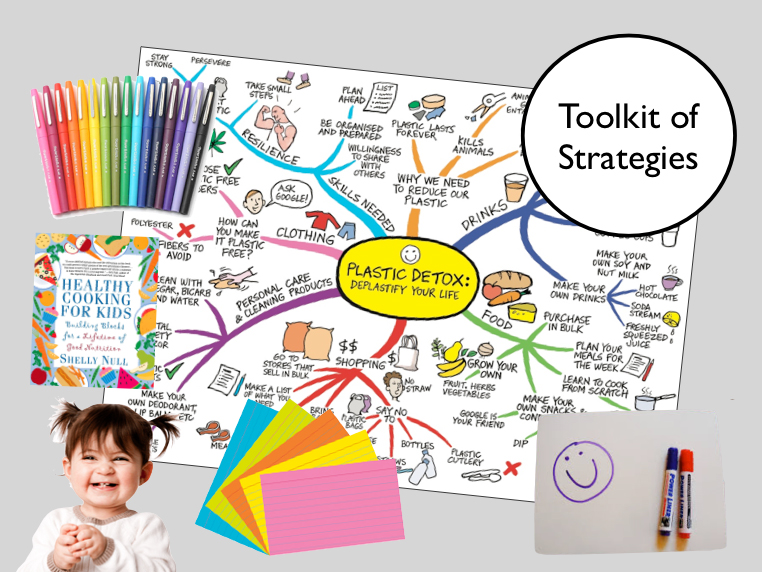
You’ve figured out what you need to study. Now it’s time to decide on the best strategy to learn the content.
The strategy you select will depend on where you’re at on your learning journey and what you need to be able to do with the content.
I see learning as being made up of two distinct parts:
• Part 1: You first need to understand the information and make sense of it
• Part 2: You need to commit the information to memory so you can easily retrieve it when you need it (e.g., in a test or exam)
Doing part 1 well will help you with part 2 (remembering the information). But it won’t be enough to cement the ideas into your memory. You’ll need additional strategies for this.
Here are some ideas to help you with each part of your learning journey . . .
When you are trying to understand a topic
• Grab a sheet of A3 paper and draw out the ideas as you read
• Watch an animated video explaining the topic
• Ask for help from an expert (e.g., teacher), friend, or Google
• Access children’s books or graphic novels on the topic
When you need to remember information on a topic
• Do a practice test
• Teach a friend, a pet, or the wall
• Write or draw out as much as you can remember
• Record yourself explaining an idea
If you want to remember something, you need to practice remembering that information.
It’s okay to incorrectly recall the information but it’s critical that you find out what the right answer is immediately. If you do this, you won’t embed the incorrect information!
Steer clear of studying in the following ways:
• Passively rereading your books and notes
• Highlighting your notes
• Copying out your notes
• Summarising your notes or a chapter (this is worth doing in the early stages of learning something new but it’s not a good way to prepare for a test or exam).
These are what I call ‘Feel Good, Get Nowhere’ study strategies. They feel good to use because they’re easy. But they get you nowhere because they’re not very effective ways to learn.

We live in an environment that has trained us to seek out pleasure and immediate gratification. This makes sitting down to study incredibly difficult for a lot of people.
Study forces us to face up to the fact that we don’t know everything and/or we may suck at some things (at least to begin with).
This explains why you probably won’t feel comfortable when you first sit down to study. You’ll feel the urge to distract yourself. But resist the urge.
Sit with the discomfort. Don’t run from it. Push through it.
Use an electronic timer to time your study sessions (25 – 45 minutes). This way your brain knows there’s an end point and you won’t be stuck in the discomfort forever.

When the timer goes off, give yourself a break. These breaks will help you to mentally re-energise.
A recent study from the University of Sydney confirmed this. Researchers found taking a five-minute unstructured rest break improved students’ ability to focus and learn.
Force yourself to step away from your computer screen and go outside. Look up at the sky and some trees. If you can, add some movement into your breaks.
You are not a machine. In order to engage in quality study, you need to take regular breaks.
We’ve just broken down study sessions into five simple steps:
Step 1: Prepare your environment
Step 2: Pinpoint what you need to study
Step 3: Choose your study strategy
Step 4: Embrace the pain and go!
Step 5: Take a break
Your first few study sessions will require a bit of willpower to carry out. But why would you want to rely on your willpower reserves all the time?
That’s far too draining.
This is where creating a study habit can help to streamline the process and conserve your mental energy.
Most of us have easy access to an abundance of endless entertainment options. There are many cues in our environment that remind us of the fun things we could be doing instead of study.
If you can establish a study habit, you eliminate all these options from your life for that part of your day.
Once you decide when and where you’re going to study, you’re no longer overwhelmed by all the choice. Your brain knows exactly what it needs to do.
Here are some examples of tiny study habits:
1. After I have a snack, I will take my phone and place it in another room (on silent).
2. After I finish dinner, I will take out my flashcards and place them on my desk.
3. After I unpack my bag, I will grab a post-it note and ask myself “What didn’t I understand in class today?” I will write down one thing.
4. After I have a shower, I will place my textbook on my desk.
5. After I hear a concept I don’t understand, I will write it down on a post-it note.
6. After I have pinpointed what I need to study, I will ask “Which strategy will I use to learn this?”
7. After I hear the timer go off, I will get up and go outside.
These study habits are tiny but that’s the whole point. When we are starting out, we keep the study behaviour small so it feels fun and easy for the brain.
“Study” can sound mighty grim. It can bring to mind images of staying up late into the night cramming. It can feel repetitive, dull, and pointless.
“Study” sounds like what your teachers and parents want you to do. It doesn’t sound like something you’d do for fun.
Frankly, the term “study” comes with a lot of baggage.
But that’s okay. There’s no reason why you need to use the word.
You can create a mind map or test yourself with a flashcard desk without calling it “study”. Just do the tasks you need to do to understand and remember the information. There’s no need to name the tasks as “study”.
If you do want to call it something, try using a fun and playful term that has no baggage. For example, you could frame study as doing bicep curls for your brain.
Think about the things you are good and confident at doing now. What were you like when you first started? You probably weren’t great!
But you kept at it and over time, you got better. Your skills and confidence developed.
The same thing applies with study. You’re not going to be amazing at studying to begin with. You’re going to feel awkward and clumsy as you wrestle with new ideas. But cut yourself some slack.
Approach your study sessions as mini experiments. Go into them thinking, “Let’s test out this strategy and see how it goes”. If it doesn’t work, you can try again or try something different in your next study session.

This means you need to prepare yourself mentally and physically for them.
You can work so hard to memorise large quantities of information for an exam, but if you’re not mentally and physically prepared, all that hard work can sadly go to waste.
When it comes time to take your exams, you have to relate to yourself as a professional athlete. Leading up to the day of the big performance (i.e. the exam), you need to eat nutritious food, be in the right frame of mind, manage your nerves, and allow your body to rest. These simple things can make all the difference to your exam performance.
You may be thinking “But isn’t this just common sense?”
It is! But creating healthy habits takes time and practice.
It’s one thing to intellectually know you should be eating well but it’s another thing altogether to incorporate healthy meals and snacks into your lifestyle.
I see a lot of students drinking energy drinks, getting very little sleep, and eating highly processed foods in the days leading up to exams. I have to admit, there was a time when I engaged in these behaviours too. I can tell you from personal experience, this is a recipe for mediocre grades and a miserable existence.
Here are my top 10 tips to prevent burnout and boost exam performance:
Sleep is critical to the learning process, exam performance, and wellbeing. Yet it’s usually the first thing students sacrifice to get more study done.
If you miss two hours of sleep each night for a week, the cognitive effects are as bad as going without sleep for two days straight!
Studies have also found that if you stay awake for 18 hours straight that’s like having a blood alcohol level of 0.05. In other words, it’s like being legally drunk. Your ability to focus, think, and learn will be seriously impaired.
You can’t adapt to getting less sleep. As adolescents, you need about 9-10 hours of sleep per night to be as alert as possible when you wake up.
If that feels unachievable, try to just get an extra 15 minutes of sleep tonight. Gradually increase this each night until you reach your target.
Often students stop exercising when they start preparing for exams. They think “I don’t have time to exercise!”. It’s as if they think they must spend every moment studying. Don’t fall into this trap.
Movement is your friend when it comes to studying for exams.
Research shows engaging in regular physical movement will help you to study more effectively. Firstly, it’s a great way to relieve stress and release feel good chemicals. Secondly, it gets the blood flowing more efficiently to your brain, which can give you a cognitive boost.
One study found students who engaged in 5 minute movement breaks every 17 minutes during a lecture retained more information and could focus better.
Every time you engage in a short movement break, you’re enhancing your study sessions.
Research has found that students who skip breakfast experience a decrease in cognitive performance and alertness compared to students who eat breakfast.
Eating a nutritious breakfast will give you a cognitive boost before an exam. It will also help you to feel fuller for longer, stabilise your mood, and give you plenty of energy to get through the exam.
Here are some healthy breakfast ideas:
Muesli or porridge with nuts and fresh fruit (e.g., berries) Wholemeal toast with a variety of toppings (e.g., baked beans, tomatoes, and avocado) and a piece of fruit A healthy homemade smoothie (click here for my brain boosting smoothie recipe)
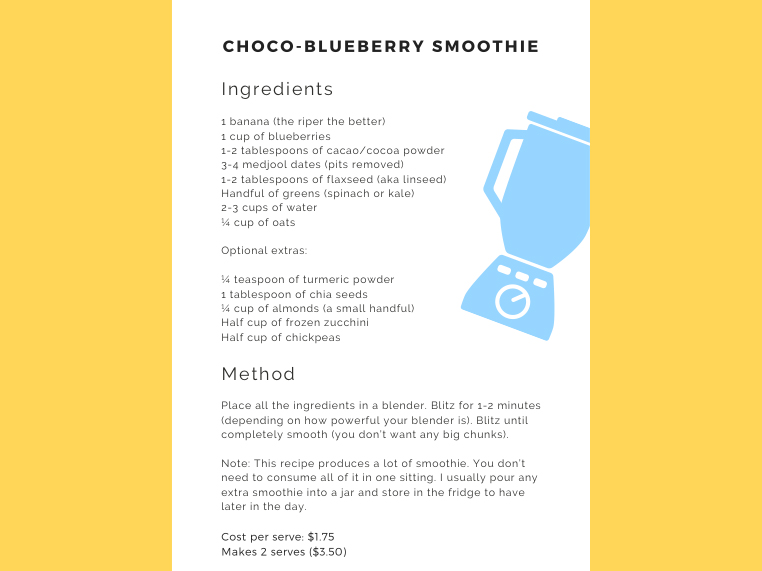
Your brain requires adequate hydration to function properly. Drinking water ensures that your brain receives the necessary fluids to perform tasks efficiently, such as retaining information and problem-solving.
Take regular sips of water as you study. It’s a good idea to have a glass of water or a reusable drink bottle within arms reach.
You may even want to create a tiny habit to remind yourself to engage in this simple behaviour (e.g., “After I finish answering a practice exam question, I will take a sip of water”).
Many years ago, I started thinking that my teachers and lecturers were out to get me. I thought they would mark me down wherever they got the chance. As a result of this distorted thinking, I became too scared to write anything in one of my first tests at law school. After receiving a terrible grade (5%), my brother said to me:
“Remember sis, your teachers want you to do well. They will try to give you marks wherever they can. It’s in their best interest to do so.”
Don’t worry about writing a perfect answer. If you’re unsure, be brave and still write something down. Even if it’s just a few dot points, it’s better than nothing. You may not get any marks for it, but your teachers won’t take marks off.
Just remember, most of the time your teachers are on your side and they want you to succeed. When you do well, it makes them look good.
Chances are there will always be something that you could have studied more thoroughly come the day of your exam. But on the morning of an exam, you can’t do much about that, so there’s no point worrying. Worrying will just deplete your finite energy, which you need to conserve for the exam.
Instead of worrying, try saying this to yourself before each exam:
“I now know so much more than I did before. I’ll be able to answer many questions in this exam.”
Telling yourself this positive micro-thought will allow you to enter the exam in a calm and confident frame of mind.
It’s normal to feel a bit nervous before an exam. But there are certain things and people that can push your anxiety levels into dangerous territory and impair your exam performance.
For example, coffee and energy drinks will skyrocket your stress levels. Similarly, hanging out with people who have a lot of nervous energy and are venting about the exam (“I’m going to fail!” and “I hardly studied!”) are going to leave you feeling distracted and a little jangled.
Before the exam, do your best to isolate yourself from these people. If you’re worried about offending someone who is venting to you, you could say “I’m sorry but I really need to do some last minute cramming”. Then proceed to pull out your notes and pretend to read them.
How many times have you stayed back after an exam to talk to your friends about what you put for each question? Have you ever felt terrible after doing this?
It can be reassuring to know that you wrote the same answer as your friends. But if you find out that you wrote something completely different, you may start to second guess yourself. If you have another four or five exams to go, this may throw you off your game.
This is why I don’t recommend engaging in a postmortem of the exam until you get your results/exam paper back.
When you walk out of the exam room, tell yourself:
“That exam is over. There’s nothing I can do to change how I went. It’s time to move on!”.
You could imagine yourself locking the exam in a box and throwing it off a cliff or rolling it up and stuffing it in a bottle and throwing it out to sea. The point is you need to mentally disconnect from that exam and focus on studying for the next one.

If you come across a question that you’re not sure how to answer, stop for a moment and take a few deep breaths (in for the count of 4 and out for the count of 4).
A simple breath activity you can try is the Box Breathing Technique. This involves imagining yourself breathing along the sides of a box (breathing in for the count of four on one side, out for the count of four on the next side, etc). Repeat this 2-3 times. Then take a look at the question again.
If you are still unsure how to answer the question, move on to another question.
The worst thing you can do is panic (remember, stress impairs your ability to think and recall information).
By engaging in Box Breathing, you can help yourself to remain in a calm and stable state.
Many of us are familiar with writer’s cramp. This can be caused by gripping onto your pen too tightly. Try loosening your grip a little.
Alternatively, experiment with a range of different pens. Some biros require you to press down hard on the page to make a mark, but not gel pens. The ink just flows onto the page!
The reality is, even with a good gel pen, your elbow will start to hurt at some point if you’re taking a 3 hour exam. When it does start to hurt, have a rest for a few seconds (yes, you have time to do this). Stretch your arm out. Shake it a little.
Treat each exam like a mountain hike rather than a 100 metre sprint. Resting for a few moments here and there will be time well spent and will enhance your overall performance.
These simple strategies can help to elevate your exam performance. My advice is to start small. Even if your exams are several weeks away, select one or two of these ideas and start testing them out today. At first, the strategies will require a bit of mental effort. But like anything in life, if you persevere they’ll become second nature to you and they’ll just be things you do without even thinking.
Want to learn more exam strategies? Click here to download a free copy of 70 ways to ace your exams.
Dr Jane Genovese delivers interactive sessions on learning to learn, combating procrastination, exam preparation, how to focus in the age of distraction, habit formation and much, much more!
Get FREE study and life strategies by signing up to our newsletter:
© 2024 Learning Fundamentals